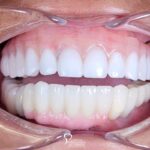Why Does Keurig Coffee Taste Watery? Coffee enthusiasts who want a hands-free brewing experience have switched over to Keurigs since they are the most effective and quick coffee makers available.
Most of the time, Keurig coffee machines live up to their promise of providing consumers with great coffee at the touch of a button, but sometimes they still need some maintenance.
The weakening of Keurig coffee over time is one of the most frequent concerns we hear about them.
There are a few things you may attempt to give your old, dependable coffee maker new life before you go to the shop and think that weaker coffee is a sign that your machine is dying and that it’s time to get a new one.
You may try the suggestions we provide in this post if your Keurig begins producing weaker coffee than normal. In many situations, there is a simple remedy, and you may soon resume drinking robust, smooth coffee.
Recommended: Top Picks for Night Suits for Women – More Than Just Comfort
Taking Care Of The Symptoms
We want to point out that buying a new K cup may often work the trick before we go on to a remedy that tackles the fundamental reasons of weak Keurig coffee.
You may immediately fix the issue and resume enjoying your morning coffee by switching to one of the stronger K cups since certain K cups are intrinsically more tasty than others.
Despite the fact that a coffee’s strength has more to do with how you brew it than the inherent attributes of the bean, many people believe that dark roast coffee has a richer taste. If you typically like light and medium roast K-cups, you may want to switch to a darker roast.
Replacing K cups is a great short-term fix that will give you some time while you investigate the root of the issue.
Cutting down on water consumption is another fast approach. Weak coffee from a Keurig is often the result of problems with the water flow, as we’ll discover in the next section, and adding less water will make your cup stronger.
While though this still won’t solve the issue, it is a simple approach to create stronger coffee while you work on fixing the real issue.
You can also visit Globlar.com for more news & updates!
Treating The Illness
After providing you with two temporary fixes, it’s time to put on our work gloves and attempt to address the underlying issue causing your Keurig to create weak coffee.
The most frequent reason of poor coffee is a jammed needle. The top of Keurig machines has a needle that is used to puncture K cups and provide water to the pod.
When a Keurig is in good condition and working properly, the needle punctures the K cup and water then drips through the needle and onto the coffee grounds before draining into your cup.
When the water needle becomes blocked with old coffee grounds, mineral buildup, or other unknown junk from frequent usage, the issue occurs.
Just a little amount of water from a blocked needle enters the K cup; the remainder seeps out of the needle’s top, avoiding the coffee grounds and producing a weak, watery beverage.
Cleaning the needle can probably make your coffee stronger again if it has suddenly become weaker than it used to be owing to a blocked needle. This is how:
Cleaning The Needle
- Take the needle out of the Keurig. Although though each Keurig model varies significantly, all of them contain a mechanism for removing the needle for cleaning.
To properly remove the needle, go to your Keurig’s user manual and follow the instructions.
- To physically clear the Keurig needle, use a tiny, thin instrument like a toothpick or sewing needle.
It is typically clear whether a blocked Keurig needle is to blame for your poor coffee since there will be a lot of buildup and residue
- Reverse the procedures to take out and reinsert the needle. Before attempting to brew a cup of coffee, we advise doing a test run with water to ensure that you reattached the needle properly.
What To Do If It Didn’t Work?
Do not fret! Before giving up and advising you to get a new Keurig, we have one more thing to try. You may need to descale your Keurig if cleaning the needle wasn’t effective.
Certain areas have hard water, or water with a high mineral concentration, which might clog your coffee maker and leave behind thick residue. Fortunately, clearing out this buildup is simple.
- Pour vinegar into the water reservoir of your Keurig halfway.
- Add water to the remaining reservoir capacity.
- Start the brewing process without adding a K cup. The intention is to allow the vinegar combination pass through the machine and remove any buildups and mineral deposits.
- Do another brew cycle without a K cup by filling the reservoir simply with water. To completely clean your machine of any remaining vinegar, we suggest using this procedure numerous times.
Unfortunately, it’s probably a good idea to replace the machine if this doesn’t help your Keurig coffee’s flavor return.
Conclusion
Keurigs are unsurpassed in terms of ease of use for making coffee at home, but sometimes you’ll still need to look inside and give them some TLC.
Fortunately, the majority of weak coffee is brought on by build-ups in your Keurig’s water pipes or needle, and cleaning the needle and performing a brew cycle with vinegar typically takes care of the problem. If neither resolves the issue, your computer probably has to be replaced.


